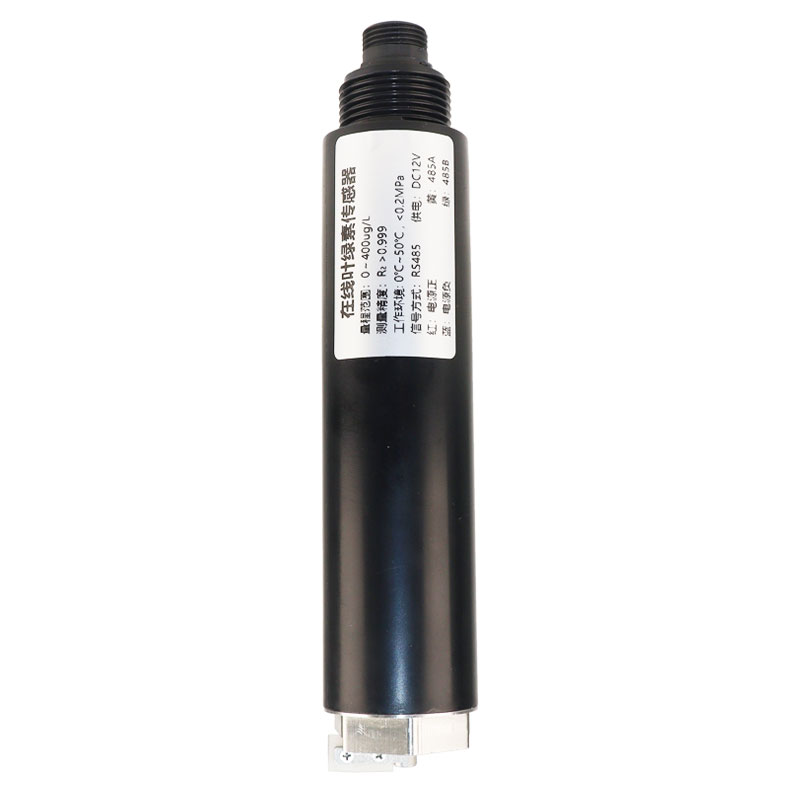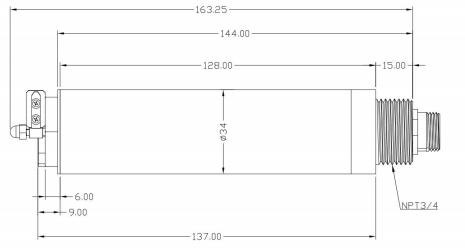Tianqiong Sensor IOT Technology Co., Ltd
Sales Manager:Ms. Emily Wang
Cel,Whatsapp,Wechat:+86 15898932201
Email:info@fengtutec.com
Add:No. 155 Optoelectronic Industry Accelerator, Gaoxin District, Weifang, Shandong, China

Sales Manager:Ms. Emily Wang
Cel,Whatsapp,Wechat:+86 15898932201
Email:info@fengtutec.com
Add:No. 155 Optoelectronic Industry Accelerator, Gaoxin District, Weifang, Shandong, China

Model:FT-S15S
Brand:tianqiong
one.How Chlorophyll Sensor works
Chlorophyll Sensor uses the principle of fluorescence to monitor blue-green algae in real time and estimates phytoplankton concentration by detecting the fluorescence of chlorophyll in situ.Chlorophyll Sensor is a device specially designed to detect chlorophyll content.Its working principle is based on the fluorescence and light absorption characteristics of chlorophyll.
Under natural light or light sources at a specific wavelength, chlorophyll absorbs light energy and emits fluorescence.The intensity of this fluorescence is proportional to the content of chlorophyll, so the content of chlorophyll can be estimated by detecting the intensity of fluorescence.
The advantage of Chlorophyll Sensor is that it can measure chlorophyll content in real time, quickly and non-destructively.It can be used for research, investigation and monitoring of rivers, lakes, ponds, marine surveys, aquaculture, drinking water sources, algae and phytoplankton conditions.
two.Chlorophyll Sensor Technical Parameters
| Measurement principle | Fluorescence method |
| Range range | 0-400ug/L |
| Resolution | 0.01ug/L |
| Accuracy | R2>0.999 |
| Temperature compensation | Automatic temperature compensation |
| Self-cleaning function | With automatic cleaner, it can prevent biological adhesion and avoid light window contamination to ensure that long-term monitoring is still stable; it can set automatic cleaning time and cleaning times, and the power consumption is 0.7W |
| Output method | RS-485 (ModbusRTU protocol) |
| Storage temperature | -5℃~65℃ |
| Working environment | 0℃~50℃, <0.2MPa |
| Installation method | Immersive mounting, 3/4NPT mounting thread |
| Cable length | 5m |
| Power consumption | 0.4W, 12V power supply |
| powered by | DC: 12V~24V |
| Protection level | IP68 |
| Calibration method | Two-point calibration |
| Housing material | 316L stainless steel |
three.Chlorophyll Sensor size/installation
1.Chlorophyll Sensor size diagram

2.Wiring diagram
The cable is a 4-core shielded wire:
Red line—Power line (12~24V) Black line—Ground line (GND)
Green line—485B Yellow line—485A
3.Installation
1) The site can choose 6 points (3/4 NPT) threaded installation or
Installation accessories bracket installation, or other installation methods that can fix the sensor.
2) Fixed installation is preferred, and drag-chain installation is prohibited.
3) During installation, the water flow and liquid level changes should be fully considered to ensure that the water flow can cross the optical path, and the sensor is 10cm or deeper underwater.
4) Installation distance requirements: Keep it more than 3cm from the side wall and more than 10cm from the bottom.
Four.Chlorophyll Sensor Maintenance and Maintenance
1.Maintenance schedule
Maintenance project maintenance time note
Clean the sensor for 0.5 to 3 days (brushless) 4 to 8 weeks (brushed)
Sensor inspection for 6 months
Replace O-ring for 1 to 2 years
2.Maintenance method
1) Check the outer surface of the sensor and rinse the outer surface of the sensor with clean water.If there is still dirt residue, please wipe it with a moist soft cloth.For some stubborn dirt, you can add some household detergent liquid to the water to clean it.
2) Check the sensor cable to check whether there is any fracture in the outer shell of the cable.The cable should not be tight during normal operation.
3) Check the measurement window to check whether there is any dirt and wipe it with a dust-free cloth.
4) Sensor calibration can be calibrated through the upper computer software or by yourself
RS-485 sends MODBUS commands to calibrate by itself.
3.Sensor calibration
3.1 Zero Point Calibration
Use a brown beaker to measure an appropriate amount of distilled water, place the sensor vertically in the solution, and the front end of the sensor is at least 10cm away from the bottom of the beaker.After the value is stabilized, perform zero calibration.
3.2 Slope calibration
Place the sensor in a standard solution, and the front end of the sensor is at least 10 cm away from the bottom of the beaker.After the value is stabilized for 3 to 5 minutes, the slope calibration will be performed.
In a certain farmland, the LED electronic display of "standard agrometeorological stations" real-time presents data such as soil water content, salinity, and ground temperature, providing key basis for farmers' scientific planting. The new-generation standard agrometeorological station...
The working principle of Ground Penetrating Radar (GPR) is based on the propagation characteristics of electromagnetic waves. It emits high-frequency electromagnetic waves into the ground. When these waves propagate through underground media, once they encounter interfaces between different media—s...
Five Elements Micrometeorological Instrument, model FT-WQX5S, features an exterior made of stainless steel. This material not only boasts high strength, capable of withstanding a certain degree of external impact, but also exhibits excellent anti-oxidation and anti-corrosion properties. This makes i...
Water is the lifeblood of plant growth, permeating throughout their entire life cycle. Plants mainly rely on their roots to absorb water, and this water participates in numerous physiological activities within the plant.Photosynthesis is the core process of plant growth. Water and carbon dioxide und...